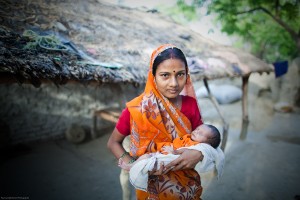Combining Research and Implementation to Make Every Birth a Healthy Birth

By: Mike Gravett, Scientific Director, GAPPS
As a frontline health worker here in the U.S., far too often I see babies born prematurely and the long-term and sometimes life-threatening effects of an early birth. It’s difficult to fathom that around the world, 15 million babies are born prematurely every year, with more than 1 million of those babies dying in infancy.
World Prematurity Day is this Saturday, November 17, and gives us all an opportunity to honor the babies born too soon around the world, as well as reflect on the work being done by frontline health workers and researchers investigating what causes pregnancy complications.
The role of frontline health workers is critical to mitigating prematurity, particularly in low-resource settings with limited access to skilled physicians and high-tech hospitals. Often in these circumstances, frontline health workers are the first and only line of defense.
While GAPPS is researching ways to prevent preterm birth, we are also focusing on scaling up known interventions that can have an immediate impact. One model is the Perinatal Interventions Program, which comprises step-by-step guidelines to help health workers in low-resource areas know how to identify and treat women with high-risk pregnancies, as well as care for preterm infants.
However, even if all current interventions were universally applied, the preterm birth rate would drop by less than 20 percent. GAPPS has recently announced five new grants as part of the Preventing Preterm Birth initiative, which is funding innovative research projects to discover the causes of preterm births and develop new ways to prevent them. For example, 125 million pregnant women get malaria every year, and one project is investigating how malaria infections of the placenta affect the immune response which leads to preterm birth and stillbirth.
To help make every birth a healthy birth, it is vital that efforts are well coordinated and that funders understand research priorities. In the new issue of the American Journal of Obstetrics and Gynecology, GAPPS Executive Director Craig Rubens and I authored an article called A framework for strategic investments in research to reduce the global burden of preterm birth, in which we present critical actions that can be taken by both researchers and funders to help advance our shared understanding of adverse pregnancy outcomes.
We hope that this new article will serve as a blueprint for the years ahead. Together, frontline health workers scaling up known interventions, buoyed by innovative research around the world, will lead to preventing prematurity and ensuring safer pregnancies for all mothers and babies.

